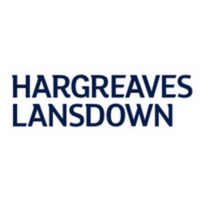How to help employees make the most of the latter stage of their working lives
The Mid-life MOT has a crucial role to play in helping people get the most out of their lives. It can also help your business get the most out of your employees.

The current climate
We’re experiencing a great shift in our life expectancy, working patterns and expectations. The traditional model of life that’s split into youth and education, work, then retirement, no longer holds true for many. We now live longer and healthier lives. Retirement ages are going up and working patterns are more unpredictable. Self-employment is growing faster among the over 65s than any other cohort of the population. People are looking to retrain, to vary their work patterns, to reinvent themselves and stay active.
If companies are to continue to get the most out of their employees, including the older workers with their wealth of knowledge and experience, they need to respond to these challenges. We also have to confront:
- The developing reality of the decline in final salary pension schemes
- The increasing numbers of people working on later in life because they can’t afford to retire.
The mid-life MOT
The 2017 government review of the state pension age highlighted the mid-life MOT as an important tool to help people prepare for the later stages of their lives.
Broadly, the MOT can be split into three aspects of their lives:
- Work and career plans
- Wellbeing, including mental and physical health
- Financial wealth, in particular their retirement savings.
Since then the Pensions Minister, Guy Opperman, has frequently highlighted and championed the mid-life MOT, exhorting businesses to develop this service for their employees. The new public financial information service, the Single Financial Guidance Body (don’t worry, they promise to rename it soon!) is also developing mid-life MOT resources.
MOT in action
Hargreaves Lansdown (HL) has been developing an MOT service for its own employees, building out from the financial engagement and literacy work already performed for employers who have a workplace pension scheme with the company.
Aviva has also been a strong pioneer of this work, having run a pilot with a small test group of their staff in 2018, they are now rolling out this service across their 15,000 UK employees.
Hargreaves Lansdown has relatively few employees over the age of 50, so we’re rolling out staff surveys to explore what financial literacy training our employees would find most valuable. These training sessions will include not just pre-retirement training on things like the state pension, annuities and drawdown but also debt management, protection insurance, building savings, scam awareness, how to manage investments and tax planning. It’s not personal advice, but employees who need this can go on to arrange it with us if they choose.
What to consider
A key aspect of this work is to ensure employees don’t feel this is a pre-retirement course. Rather it’s intended to help them stay in work for longer and to make the most of the latter stages of their working lives. It’s also about putting them in control of their lives and their plans. Research we conducted in 2018 showed people have increasing financial knowledge and confidence in their financial decision-making as they progress through life.
However they suffer a significant ‘wobble’ in their confidence in their early 50s. Probably in part as they start to contemplate the decisions around retirement that lie ahead - decisions for which they almost certainly have no prior experience. They also typically lack family experience on which to draw, as previous generations experienced a simpler and smoother transition from work into retirement.
An employer who steps in at this juncture, offering them the opportunity to review not just their finances but also their well-being and their work plans can enjoy a significant dividend of goodwill, and the retention of experienced and valuable people.
This article is provided by Hargreaves Lansdown.
Supplied by REBA Associate Member, Hargreaves Lansdown
Welcome to HL Workplace - savings & investments your employees can understand, engage with, and value.






